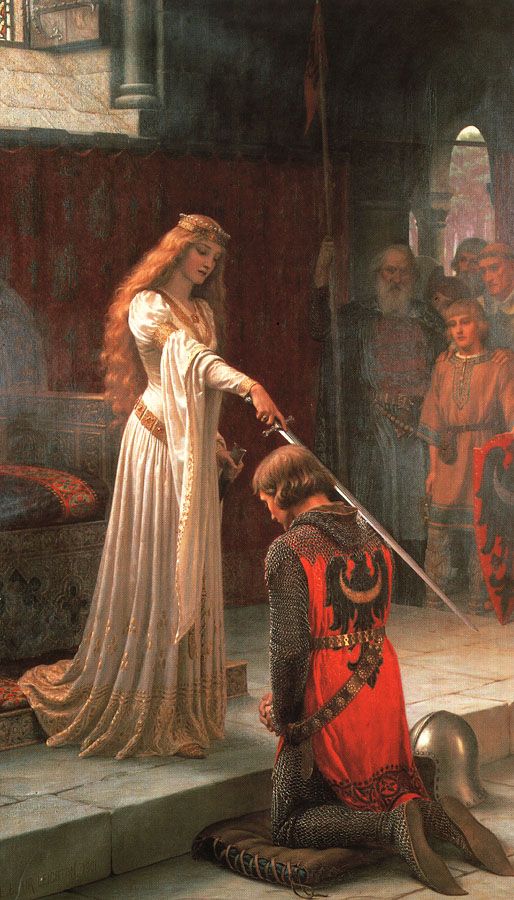

![]()
![]()


![]()
![]()
There was more to being a knight than just fighting and hunting. A knight was expected to live by the code of chivalry. Chivalry comes from an old French word for horse, cheval, and a knight was known as a chevalier, the ambassador of "la chevalerie", or chivalry. By the eleventh century chivalry became a code of conduct that knights were supposed to follow at all times during knighthood.
Knights were expected to treat their fellow knights and those socially inferior with respect. A knight could not attack an unarmed knight and a good knight fought for glory and Christian purposes and not for profit or gain. A new knight's sword was laid on the altar of the Church and blessed, thus promising to defend the Church.
Chivalry seemed to flourish between the eleventh and thirteenth centuries, before it began diminishing at the end of the Middle Ages. Although chivalry was declining, the ideals of chivalry continued to influence ways of behavior for men and nobles during the period of the Renaissance which followed in the sixteenth century.
During the twelfth century, minstrels from southern France known as troubadours, began mixing poems of romance with music for noble ladies at the courts. The basis of this art was the virtue of selfless service and courtesy to ladies and women. Epic poems contained exaggerated accounts of chivalry of knights in battle and the rescue and love of ladies, as well as magic. Poetry became the favorite pastime of this age and troubadours were welcomed everywhere. The art of composing these epic poems was practiced by kings, knights, ladies, professed poets and wandering minstrels.
One of the
most famous epic poems is The
Song of Roland. It tells how Roland, commanding the rearguard
in Charlemagne's Army, returned to France over the Pyrenees in AD 775.
He was attacked by the local Basque people and by Muslims at the pass at
Roncevalles, and the rearguard was practically eliminated.
![]()
![]()
![]()
![]()
![]()